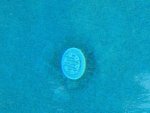Had our pool re-surfaced just over a year ago with a pebble finish. Of late there is a very dark area only around the drain, seems to have gotten worse.
It feels kind of rough. Doesn't brush off. Hard to clearly examine it in 8 feet of water.
Could this be black algae? Something going wrong with pool finish? Something else?
We are going to drain 1/2 of the water in the next month or so (high CYA - separate problem), that will make that area more accessible since water will be 4ft deep. What is the best way to determine the issue? What would indicate algae?
Having to keep the chlorine high because of high CYA, would that damage the finish? Assuming chlorine is heavier than water, could it accumulate at the drain due to the grading of the pool and would it be damaging in any way?
Really hoping it's something we can address without calling the guy who did our pool surface.
Thanks!!!
It feels kind of rough. Doesn't brush off. Hard to clearly examine it in 8 feet of water.
Could this be black algae? Something going wrong with pool finish? Something else?
We are going to drain 1/2 of the water in the next month or so (high CYA - separate problem), that will make that area more accessible since water will be 4ft deep. What is the best way to determine the issue? What would indicate algae?
Having to keep the chlorine high because of high CYA, would that damage the finish? Assuming chlorine is heavier than water, could it accumulate at the drain due to the grading of the pool and would it be damaging in any way?
Really hoping it's something we can address without calling the guy who did our pool surface.
Thanks!!!



